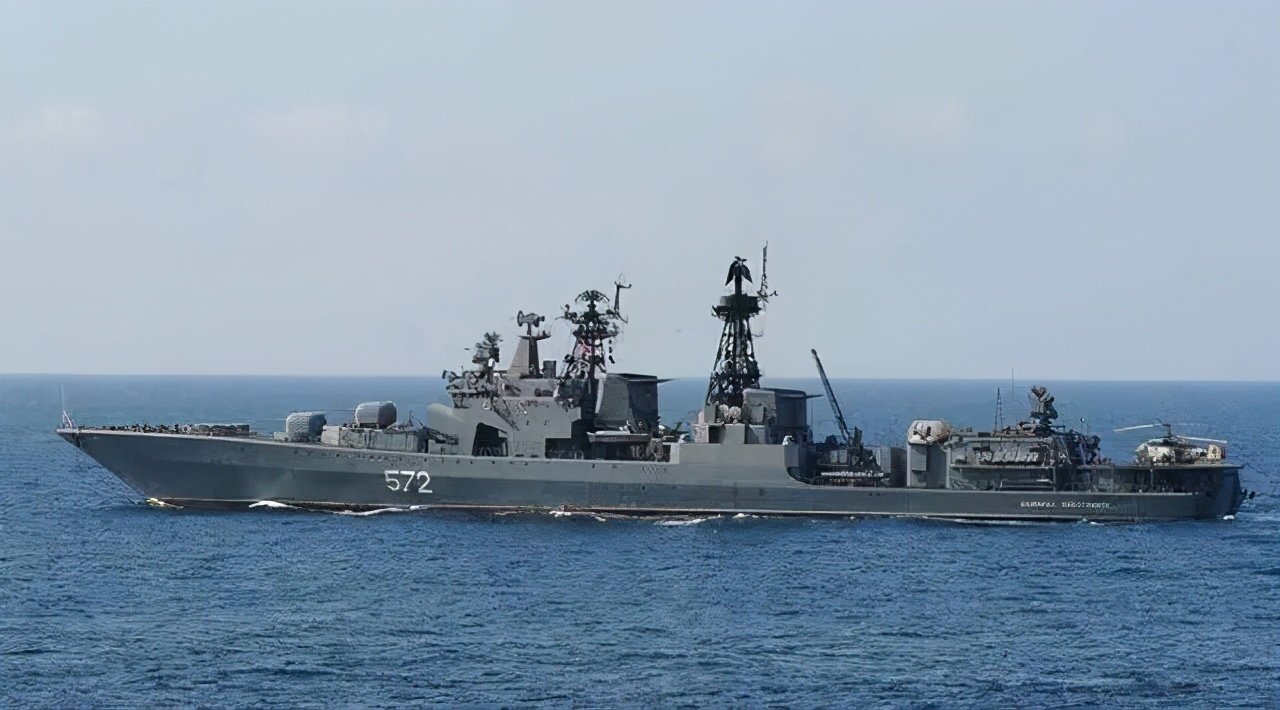November 25 as saying that the U.S. Navy’s missile destroyer John McCain broke into Peter the Great Bay, a Russian Pacific Fleet base, the previous day, and penetrated deep into Russian territorial waters about 2 kilometers.
In response, the Russian navy dispatched the “Dreadnought”-class destroyer Admiral Vinodradorf to destroy. During the expulsion process, the Russian side warned the American ship that it might use collision maneuver, and the American ship immediately turned around and left Russian territorial waters.
This is more than 30 years later, the Russian warship repeats the drama of “we will be ordered to hit your ship”. In 1988, the USS York City and the destroyer Karen stormed the Soviet naval base Sevastopol on the northern shore of the Black Sea in the Crimean Peninsula. The two Soviet frigates responsible for expelling the U.S. military could not stand it, so they hit the American warships fiercely. Afterwards, although the saying “my ship will be ordered to hit your ship” is completely false, it has become a hard-line symbol.
The U.S. military often uses the so-called “freedom of navigation” to break into the territorial waters of other countries. At the core of its reliance is the strong strength of the United States. According to the provisions of the United Nations Convention on the Law of the Sea, any coastal State has the right to delimit its own territorial sea between 3 and 12 nautical miles. At present, the vast majority of coastal countries in the world are parties to the Convention, with the exception of the United States.
What makes the United States special is that it is not a party to the United Nations Convention on the Law of the Sea and is therefore not legally restricted by the provisions of the territorial sea of 3-12 nautical miles. In order to facilitate its interference in the internal affairs of other countries, the United States has confirmed the width of the territorial sea in the form of domestic legislation at 3 nautical miles, and the excess is not recognized at all. So much so that there is such a strange situation: the U.S. military says I have not crossed the border, and the local country says that the U.S. military has crossed the border. The reason is that the vast majority of countries around the world draw 12 nautical miles, while the U.S. military only recognizes 3 nautical miles on the basis of domestic law. If the country concerned does not allow the U.S. military to sail, the United States will claim to “obstruct the freedom of navigation”.
On both sides of this confrontation, the Russian army is the “Dreadnought”-class destroyer Admiral Winogradov, and the U.S. military is “John McCain”. The construction time of the two ships is not much different. They are both large missile destroyers designed and built at the end of the Cold War. However, John McCain, a warship with a “existent record”, collided with a freighter in Singapore waters in August 2017, killing 10 sailors and injuring 5.
Perhaps there is a lesson from the past, so this time after hearing the Russian ship’s warning that it may use collision maneuvers, the American ship immediately turned around and left without any hesitation and sophistry. From this, it is not difficult to see that the U.S. military is essentially bullying the weak and fearing the strong. It is guilty to break into the territorial waters of other countries. As long as you really have the courage and strength to collide with it, it will eventually take the lead in defeat.
Although the Russian destroyer of the U.S. ship seems very exciting, in fact, it is still an emergency move for the U.S. military to bully the door. Last week, the USS Ross was expelled by Russian cruisers near Russian territorial waters in the Barents Sea.
This week, the USS John McCain broke into Peter the Great Bay in the Pacific Ocean, indicating that the U.S. Navy has formed a “blocking” situation against the Russian navy, and the strength of the two sides is compared. It’s clear at a glance.



